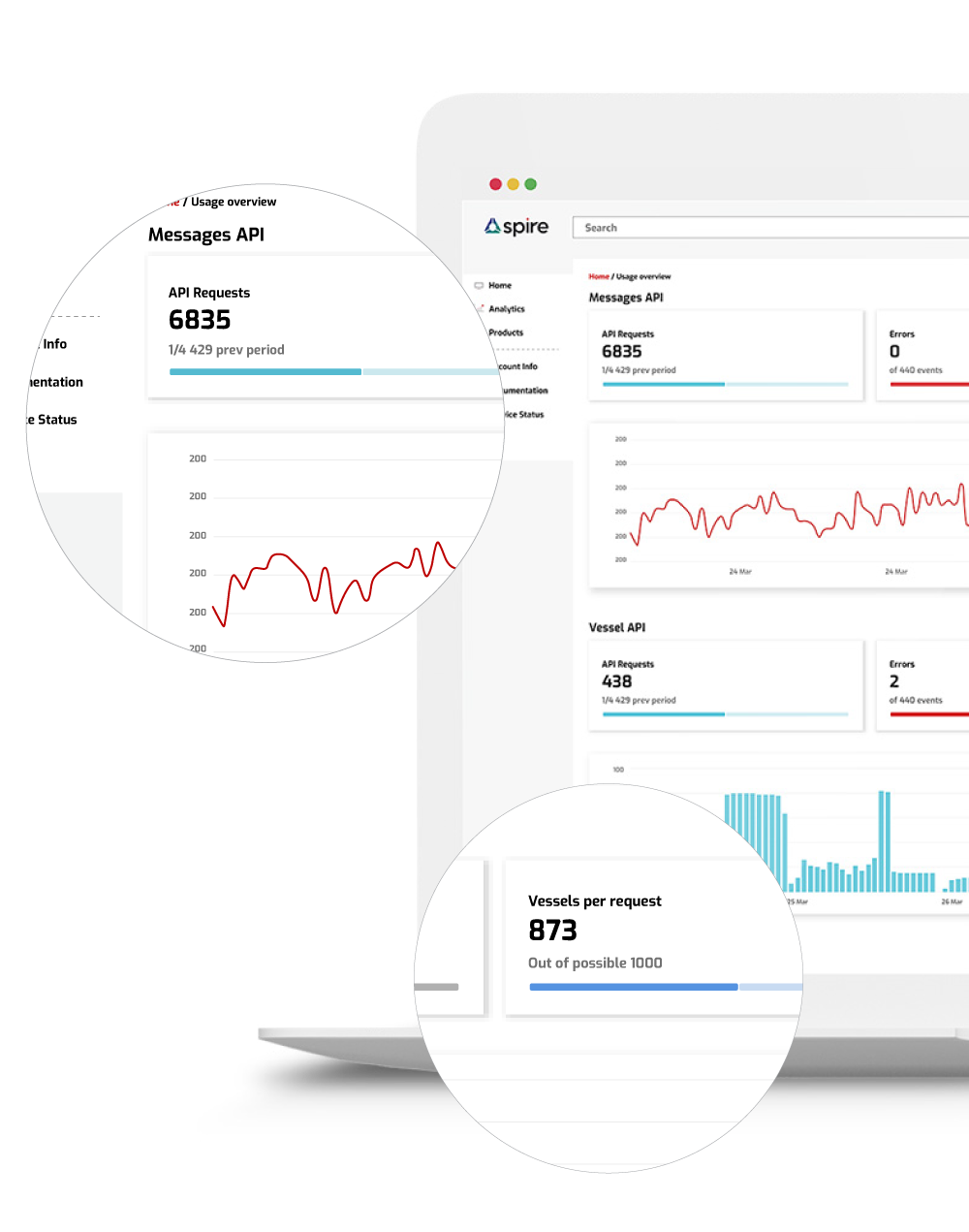Buyer’s Guide to Vessel Tracking and AIS data
Vessel tracking and AIS data vary in terms of coverage, volume, quality, and included support – which makes choosing the right data provider an important decision.
Here are a few key components to partnering
with the right vessel tracking data provider for you:
Coverage is important
Coverage is an important element to consider when purchasing data. Coverage varies from provider to provider based on the size and scope of their collection network.
Vessel tracking data–let’s use AIS data as an example–can be collected in multiple ways. Satellite and Terrestrial AIS are the two main types of AIS data collection. Spire Maritime offers satellite and terrestrial AIS data and a third type of data collection called Enhanced Satellite AIS, which targets high traffic zones – an area plagued by gaps in AIS collection. Check with your data provider to see what types of data and what options are available.
Regardless of which type of data you choose to work with, this data needs to be comprehensive to be effective. Look for a vessel data provider that owns and operates its own data collection network. Ask about down time and how many days/hours their system was down last year.

Data quality varies from provider to provider
Quality data means data that is clean, complete, and covers the area that impacts your goals. Duplicate MMSIs and IMOs are a common challenge in maritime, so look for a provider that sorts these duplicates and eliminates them to see an accurate picture of the maritime landscape. If the data isn’t the best quality, you’re basing your planning and strategic decision making on situations that aren’t happening, which defeats the purpose of purchasing the data. The visualization below shows multiple vessel tracks and how confusing raw data can be. The end result is clean lines that help you accurately track vessels and make decisions based on the data’s clarity.
Pricing structure
Quality, coverage, and support are important to getting the most out of your data plan, but it also needs to
work within your budget. Many data providers offer subscription model pricing with both long term and short term contracts. Opt for the plan that works best with your budget.
Service level agreements and support matter
Service level agreements between a supplier and a client need to be straightforward. Quality, availability, and responsibility are critical components of any technology vendor contract. Is there live support, account management, and customer success accountability?
Know your limits
Data providers should tell you about data request and data pull limits upfront. It’s important to have transparency in terms of how often you can make requests to your provider.
Test before you buy
Hands-on experience using data lets you know if it’s right for you.
For data to drive value for you, it needs to be easy to use. Inquire about the delivery method. Live maritime tracking data through an easy-to-use, queryable API or NMEA TCP feed, are popular and convenient delivery methods.
Look for a growing infrastructure
New satellites added to a constellation each year means a constant increase of quantity and quality of data delivered and reduced latency. Data quality is equally as important as competitive pricing.

You’ll need technical documentation
You will inevitably have a question and/or need support as you get started incorporating data into your processes.
Access to FAQs, tutorials, and technical documentation provides key answers on compatibility, implementation, and usage. Look for comprehensive FAQs and a diverse knowledge base that covers a wide array of topics.
Free tools and tutorials can also be helpful. Here is a link to a free tool that allows you to see how data works when predicting port ETAs. Extras, like tools and tutorials, can help you get more out of your data plan and deliver greater value to your organization.